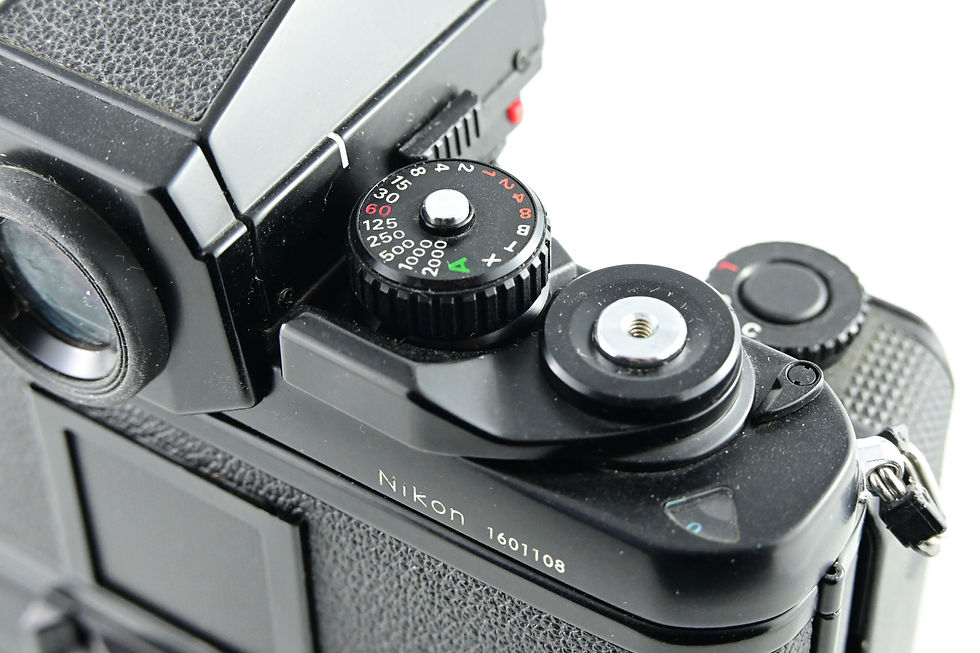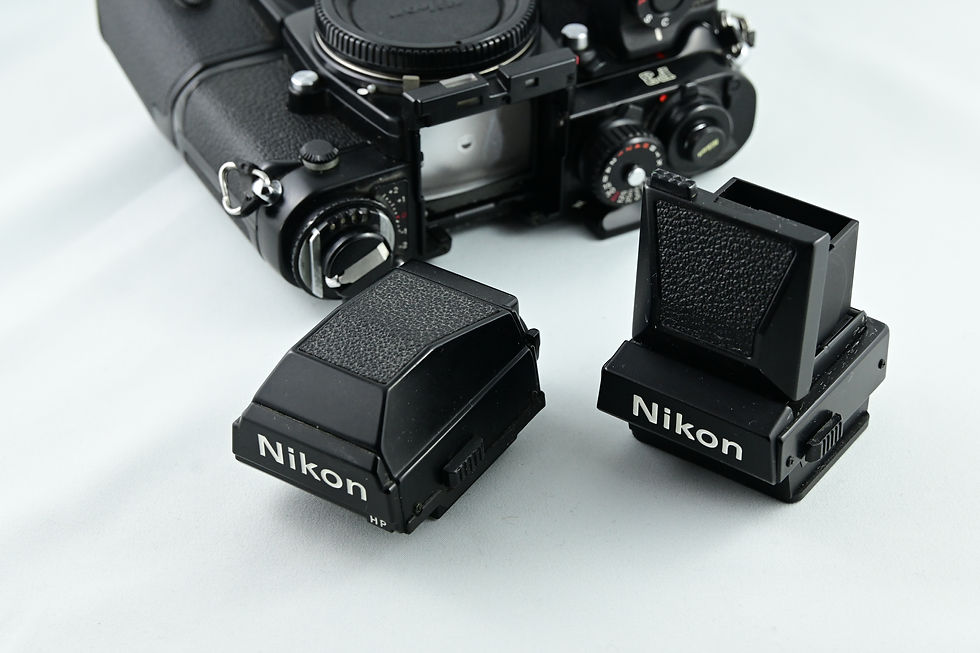Nikon F3HP
- hometecheasy
- Aug 19
- 3 min read
Updated: Aug 26

The Nikon F3 is a legendary 35mm single-lens reflex (SLR) camera introduced by Nikon Corporation in 1980. It was designed as the successor to the Nikon F2 and became one of Nikon's most iconic and enduring professional cameras. The F3 was notable for being the first Nikon SLR to incorporate electronic controls, while still retaining the ruggedness and reliability that professionals demanded. Here’s a detailed look at the Nikon F3:
Historical Context
The Nikon F3 was released in 1980 and remained in production until 2001, making it one of the longest-produced professional cameras in history.
It was designed by Giorgetto Giugiaro, the famous Italian designer, who gave it a sleek, modern look that set it apart from its predecessors.
The F3 was the first Nikon SLR to feature electronic shutter control, marking a shift from the fully mechanical designs of the Nikon F and F2.
It was widely used by professional photographers, including photojournalists, studio photographers, and even NASA astronauts (in a modified version called the Nikon F3 "Big Camera").

Key Features
Electronic Shutter:
The F3 featured a vertical-travel, electronically controlled titanium shutter with speeds ranging from 8 seconds to 1/2000 second, plus Bulb mode.
The shutter was known for its precision and durability, with a rated lifespan of 150,000 cycles.

Aperture-Priority Automation:
The F3 introduced aperture-priority autoexposure, allowing photographers to set the aperture while the camera automatically selected the appropriate shutter speed.
Manual exposure control was also available.

Build Quality:
The F3 retained Nikon's tradition of rugged construction, with a full metal body and sealed controls for durability in harsh conditions.
It was designed to operate in temperatures ranging from -20°C to +50°C (-4°F to +122°F).
Viewfinder:
The F3 featured a fixed prism viewfinder with 100% frame coverage and a 0.8x magnification.
The viewfinder displayed shutter speed, aperture, and exposure mode information, making it highly user-friendly.
Metering System:
The F3 used a center-weighted TTL (through-the-lens) metering system, which became a standard for Nikon SLRs.
The metering system was powered by a single 1.55V silver oxide battery (SR44 or equivalent).
Interchangeable Focusing Screens:
The F3 supported a variety of interchangeable focusing screens (16 types in total), allowing photographers to customize the camera for different shooting scenarios.

To replace the Focusing Screen by removing the Viewfinder 
Motor Drive Compatibility:
The F3 was compatible with the MD-4 motor drive, which allowed for continuous shooting at up to 5.5 frames per second.
The motor drive also improved the camera's handling and balance, especially with larger lenses.
Lens Compatibility:
The F3 used the Nikon F-mount, making it compatible with a wide range of Nikkor lenses, including AI (Automatic Indexing) and AI-S lenses.
Popular lenses included the 50mm f/1.4, 85mm f/1.4, and 24mm f/2.8.
Notable Variants
The Nikon F3 was produced in several variants, each catering to specific needs:
Nikon F3 (Standard Model):
The base model with a standard prism viewfinder.
Nikon F3HP (High Eyepoint):
Featured a high-eyepoint viewfinder (DE-3), which allowed photographers to see the entire frame even when not pressing their eye directly against the viewfinder. This was particularly useful for photographers wearing glasses.

Nikon F3HP with MD-4 Motor Drive Nikon F3/T:
A premium model with a titanium body and chrome finish, designed for enhanced durability and a unique aesthetic.
Nikon F3P:
A specialized version for press photographers, featuring improved weather sealing and a modified film advance lever for use with motor drives.
Nikon F3AF:
A rare variant with autofocus capability, using special DX-series autofocus lenses.
Nikon F3 "Big Camera":
A modified version used by NASA in space missions, featuring a larger body and extended controls for use with astronauts' gloves.
Why the Nikon F3 is Special
Innovation: The F3 was Nikon's first electronically controlled SLR, combining modern technology with traditional craftsmanship.
Durability: It was built to withstand heavy use, making it a favorite among professionals in demanding environments.
Versatility: The F3's modular design and compatibility with a wide range of accessories made it highly adaptable to different shooting needs.
Legacy: The F3's design and features influenced subsequent Nikon cameras, including the F4, F5, and F6.
Collectibility and Market Value
The Nikon F3 is highly collectible, particularly special editions like the F3/T and F3HP.
Prices vary depending on the variant, condition, and included accessories. The F3/T and F3P are often the most sought-after models.
Conclusion
The Nikon F3 is a true icon in the world of photography, combining cutting-edge technology with rugged reliability. Its sleek design, advanced features, and enduring performance have made it a favorite among professionals and enthusiasts alike. Whether you're shooting with it or adding it to your collection, the F3 represents the pinnacle of Nikon's engineering excellence and remains a testament to the golden age of film photography.



Comments